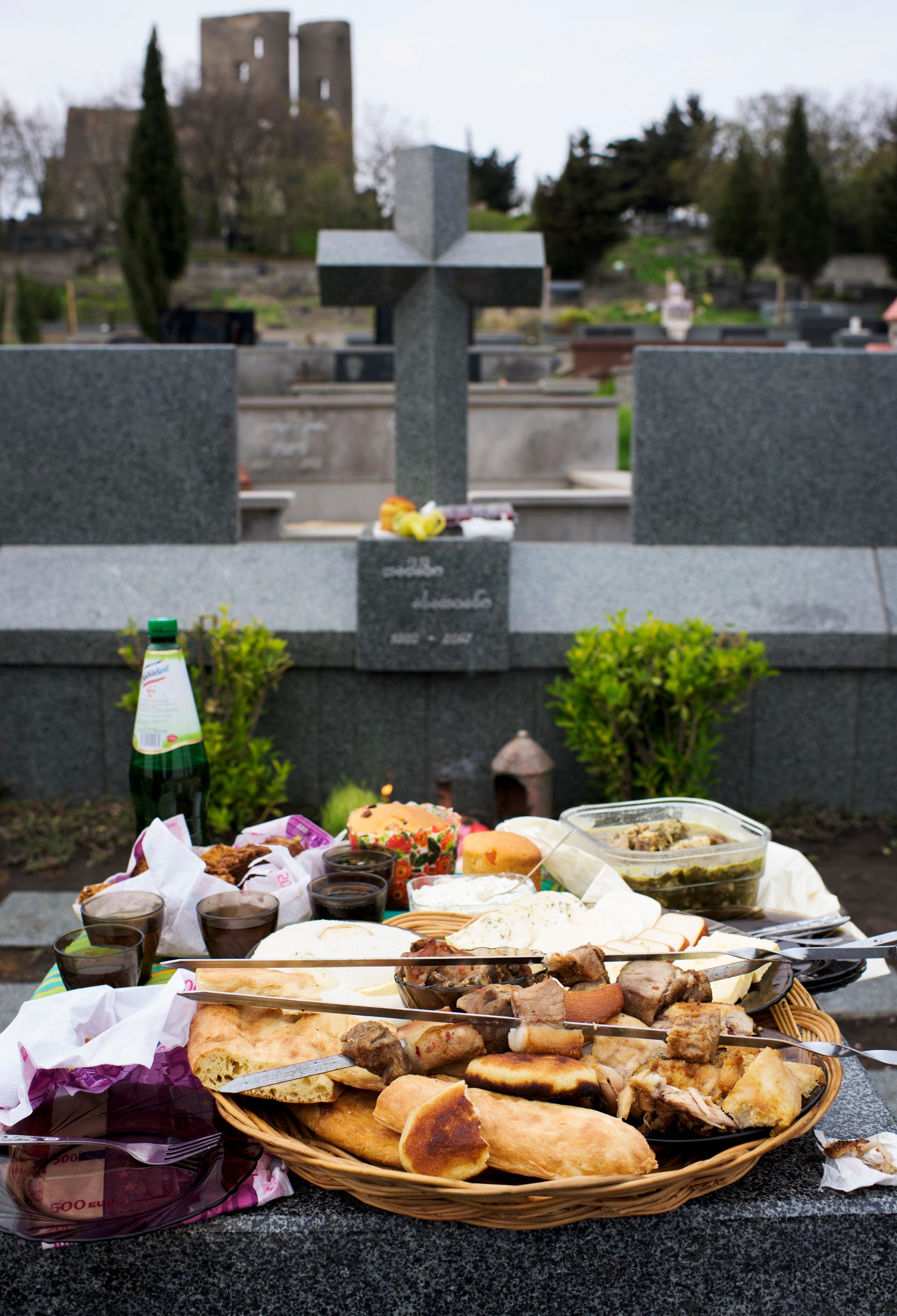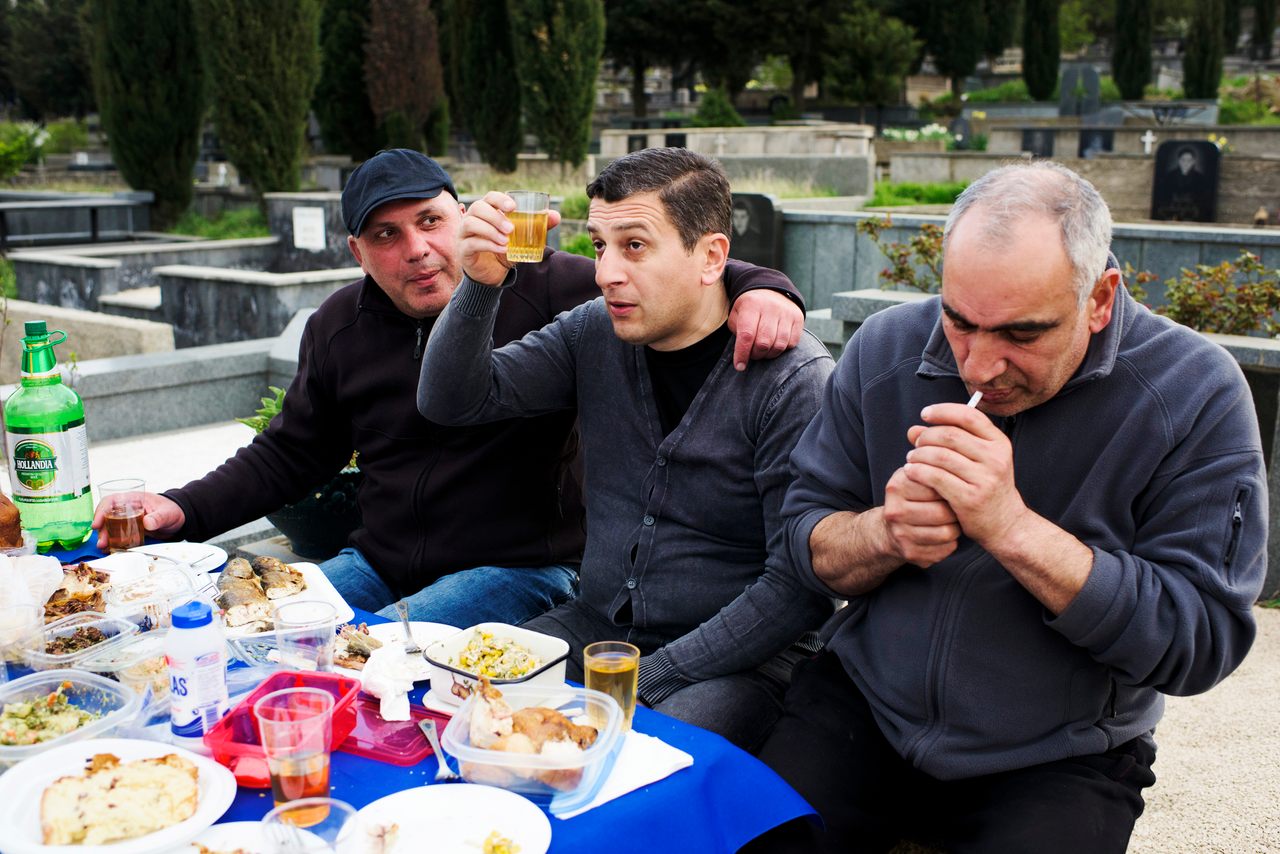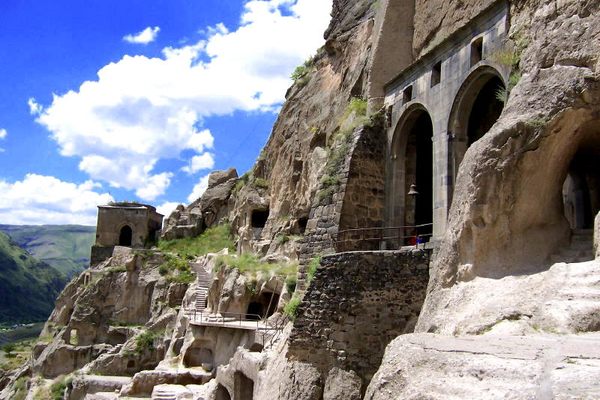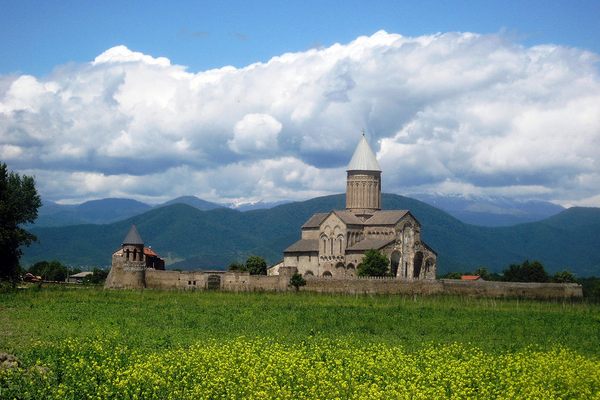Why Georgians Dine in Cemeteries for Orthodox Easter
Honoring the dead sometimes means breaking bread with them.
Every year around Orthodox Easter, Georgian cemeteries fill with families drinking wine, nibbling on platters of sweet bread, and rolling eggs dyed a deep blood-red. They cry, they offer sweet words of remembrance, and they eat.
It’s all part of a longstanding Georgian tradition of dining with the dead every spring. Though the Orthodox Church officially recognizes the Tuesday after Easter as the day to observe this rite, most families visit graveyards on Easter itself or the day after.
Growing up in the Western Georgian countryside, I remember my grandmothers making the foods for our Easter cemetery visits each year. My family, like many others, would eat slices of paska, a traditional sweet Easter bread, and roll eggs—dyed red with madder root or onion skin to represent Christ’s sacrifice and resurrection—across the burial plots.
While eggs, paska, and wine are the basic necessities for the tradition, some families may partake in a full supra (feast), bringing a table into the cemetery and loading it up with grilled meats, sweets, glasses of chacha (Georgian brandy), and bottles of wine. Some food may be left behind for the deceased, but most of it will be enjoyed by the living as they reminisce about their lost loved ones.

But as with any gathering that blends alcohol and intense emotions, sometimes things can get out of hand. Dalila Tsatava, the president of the Gastronomic Association of Georgia, says that sometimes visitors drink too much and end up disturbing others who are trying to pay respect to the dead. “Our ancestors never used to get drunk at the graveyards for sure,” she says.
But when did these ancestors start bringing food and drink to the graveyard in the first place? Although the exact origins of Easter cemetery dining are unknown, the tradition likely gained traction during Soviet rule from 1921 to 1991, when the regime persecuted the public practice of Orthodox Christianity. As many churches shuttered, traditions that typically took place in houses of worship found a new stage—including honoring the dead each Easter.
“I know many were scared of the purges and punishments from the Soviets,” says Tsatava. But by visiting graveyards instead of church itself, “people found the perfect way to be closer to God.”

According to Ketevan Gurchiani, a professor of anthropology at Ilia State University in Tbilisi, moving many traditions out of the church and into the domestic sphere had an empowering effect on Georgian women. In her paper, “Women and the Georgian Orthodox Church,” Gurchiani notes that when it came to traditions surrounding death, women’s role “was especially enhanced during the Soviet period, when women were the sole practitioners and no priest was present.”
The Easter graveyard feast is just one of several meals that Georgian women prepare for specific days and milestones after a person’s death, including for the wake, nine days after, 40 days after, and the anniversary.
But even in this Easter feast among the dead, there is also strong symbolism representing rebirth and renewal. Along with the customary eggs, many Georgians also place recently sprouted wheat on the graves to symbolize new life.
Ann Tsitskishvili, a freelancer producer from Tbilisi who recently lost her own mother, says that the spring holiday is an apt metaphor for the cycle of life. “This is the story of the end of winter and the beginning of the spring, and represents the victory over death … life begins.”
Gastro Obscura covers the world’s most wondrous food and drink.
Sign up for our regular newsletter.


































Follow us on Twitter to get the latest on the world's hidden wonders.
Like us on Facebook to get the latest on the world's hidden wonders.
Follow us on Twitter Like us on Facebook